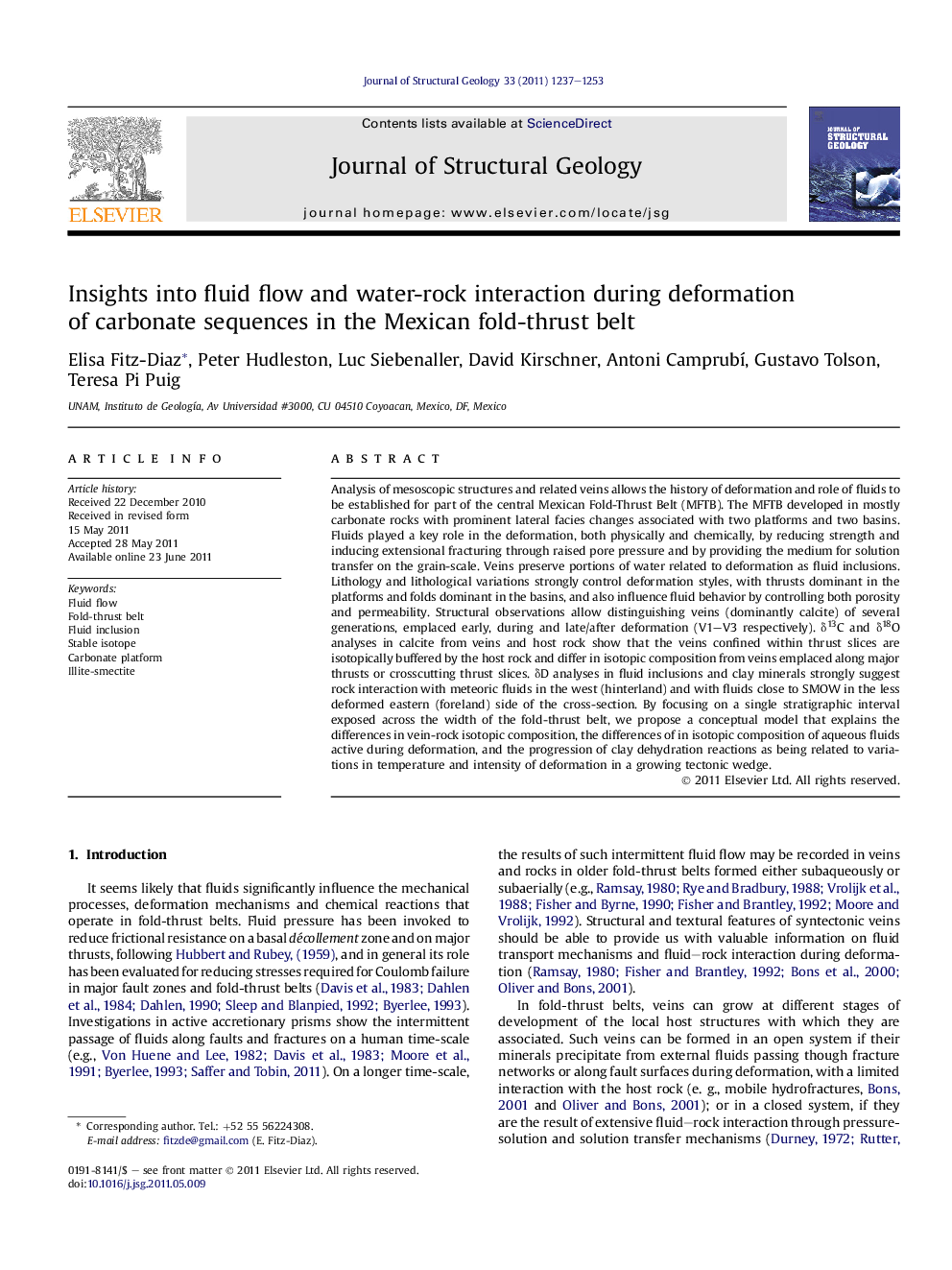| کد مقاله | کد نشریه | سال انتشار | مقاله انگلیسی | نسخه تمام متن |
|---|---|---|---|---|
| 4733523 | 1357032 | 2011 | 17 صفحه PDF | دانلود رایگان |

Analysis of mesoscopic structures and related veins allows the history of deformation and role of fluids to be established for part of the central Mexican Fold-Thrust Belt (MFTB). The MFTB developed in mostly carbonate rocks with prominent lateral facies changes associated with two platforms and two basins. Fluids played a key role in the deformation, both physically and chemically, by reducing strength and inducing extensional fracturing through raised pore pressure and by providing the medium for solution transfer on the grain-scale. Veins preserve portions of water related to deformation as fluid inclusions. Lithology and lithological variations strongly control deformation styles, with thrusts dominant in the platforms and folds dominant in the basins, and also influence fluid behavior by controlling both porosity and permeability. Structural observations allow distinguishing veins (dominantly calcite) of several generations, emplaced early, during and late/after deformation (V1–V3 respectively). δ13C and δ18O analyses in calcite from veins and host rock show that the veins confined within thrust slices are isotopically buffered by the host rock and differ in isotopic composition from veins emplaced along major thrusts or crosscutting thrust slices. δD analyses in fluid inclusions and clay minerals strongly suggest rock interaction with meteoric fluids in the west (hinterland) and with fluids close to SMOW in the less deformed eastern (foreland) side of the cross-section. By focusing on a single stratigraphic interval exposed across the width of the fold-thrust belt, we propose a conceptual model that explains the differences in vein-rock isotopic composition, the differences of in isotopic composition of aqueous fluids active during deformation, and the progression of clay dehydration reactions as being related to variations in temperature and intensity of deformation in a growing tectonic wedge.
► We analyzed the progressive deformation and temperature of deformation variations along a cross-section of the Mexican Fold-Thrust Belt wedge. Structural and stable isotope analyses of fold and thrust-related calcite veins allowed examining the degree of fluid–rock interaction at different stages/places of deformation. δD measured in water from fluid inclusions and clay indicate that water active during deformation was initially formational and was progressively influenced by meteoric fluids to the rear/west of the fold-thrust belt wedge.
Journal: Journal of Structural Geology - Volume 33, Issue 8, August 2011, Pages 1237–1253